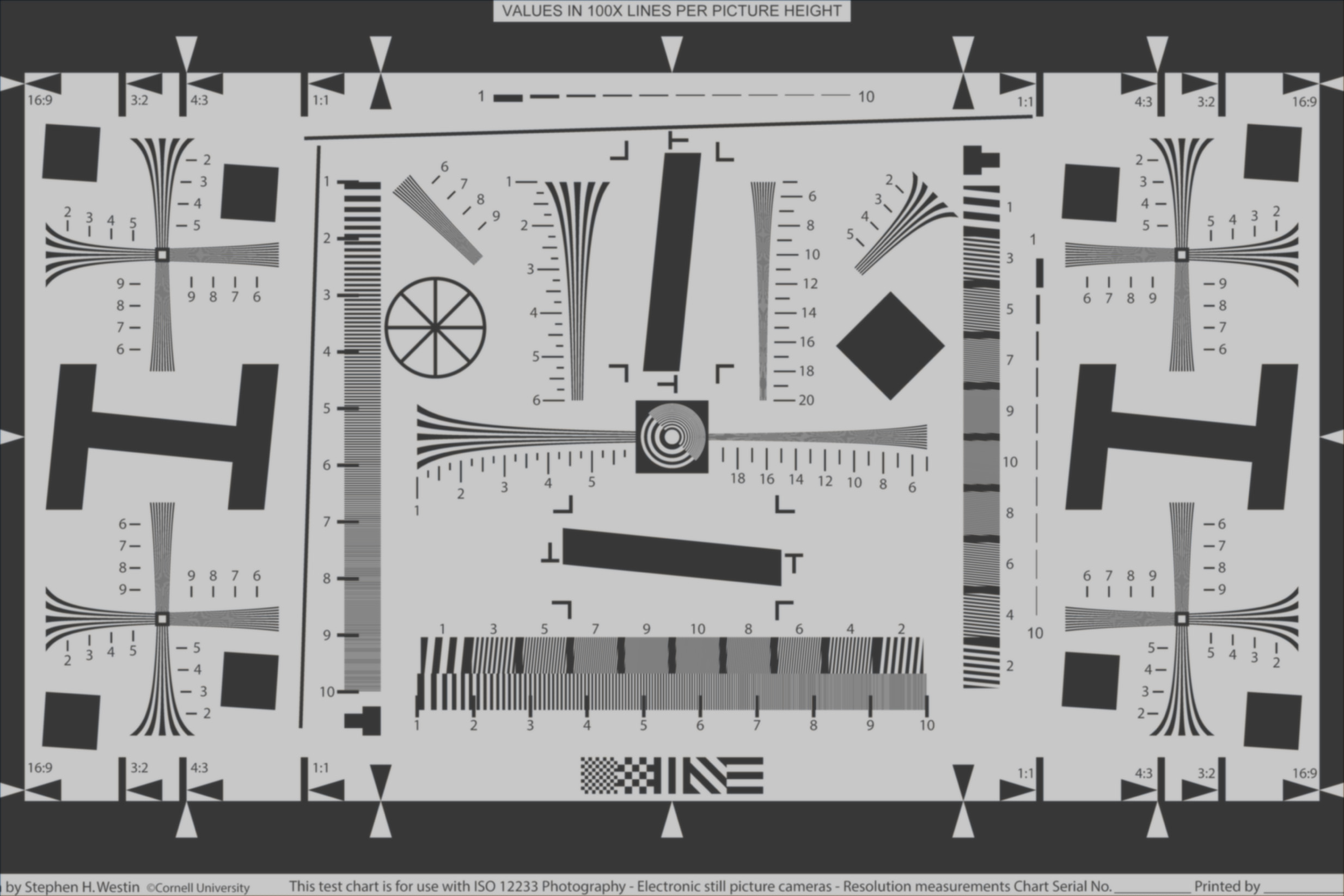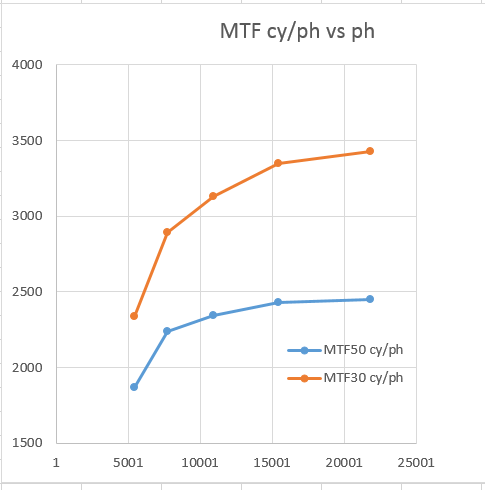I processed a reduced-contrast version of the ISO 12233 target, with white point of 200 and black point of 55, through the camera simulator of the last post. To review, here are the specs of the simulated camera. Perfect, diffraction-limited lens set at f/8. 550 nm light used to calculate diffraction, even for the red… [Read More]
The effect of Q on sharpness
In the preceding few posts I explored imaging system Q, a metric for imaging system balancing. It was developed for use with monochromatic sensors and diffraction-limited optics, a luxury not enjoyed by most normal photographers. I explored the extension of the metric to cameras with Bayer color filter arrays (CFAs), with inconclusive results. In order… [Read More]
Example Q calculations for Bayer CFAs
Restating the Q formula from this post with the Bayer CFA correction from yesterday’s post: Qbayer = lambda * N / (pitch *1.7) Where lambda is the wavelength of the light in micrometers, N is the f-stop, and pitch is the pixel pitch in micrometers. For 0.5 micrometer light, Qbayer = N / (pitch *3.4)… [Read More]
Interpreting Q in the real world
First off, let me dissuade you from one possible – and erroneous – interpretation of the findings of the last post: “Well, gee, if the sensor can’t resolve all of the detail that my lens can put out at f/8, why don’t I just stop down to f/16, where it will be balanced, and I’ll… [Read More]
What’s your Q?
Another way of looking at the minimum resolvable distance between two points is to turn it on its head and look at spatial frequencies. When we do that, we can restate one of the conclusions of this post as: the upper cutoff spatial frequency of a diffraction–limited lens is one over the Sparrow distance, or… [Read More]
- « Previous Page
- 1
- …
- 257
- 258
- 259
- 260
- 261
- …
- 384
- Next Page »

